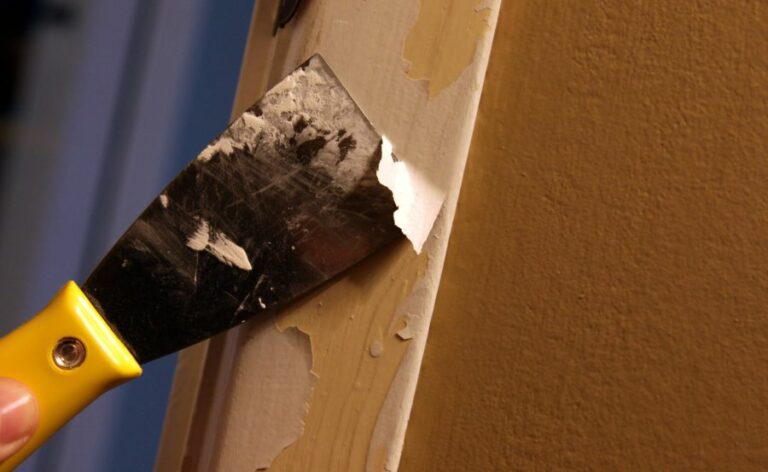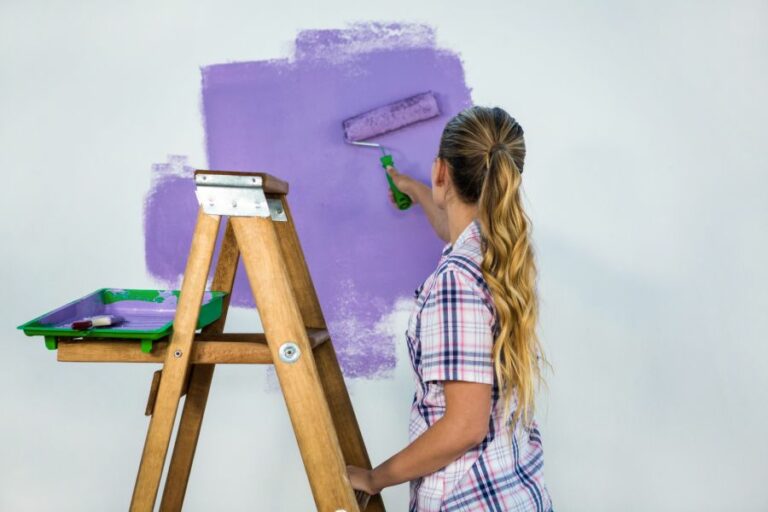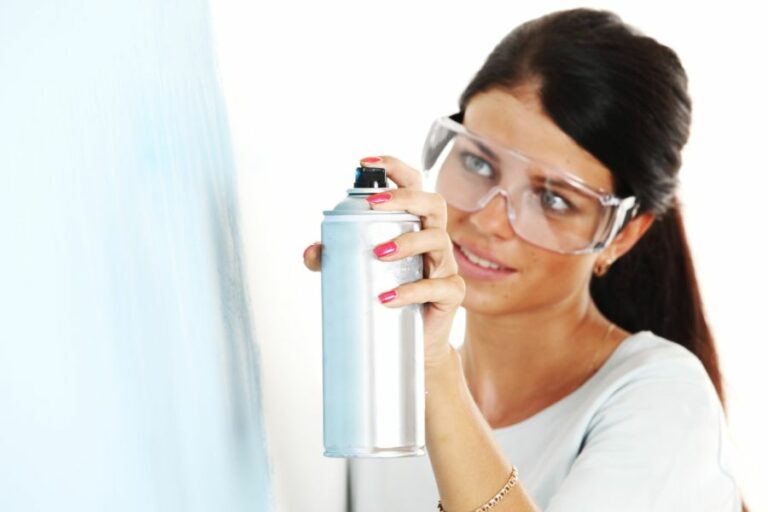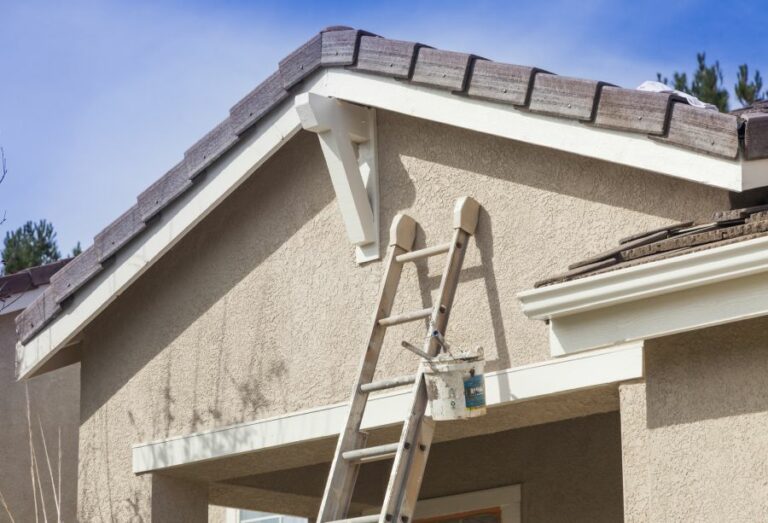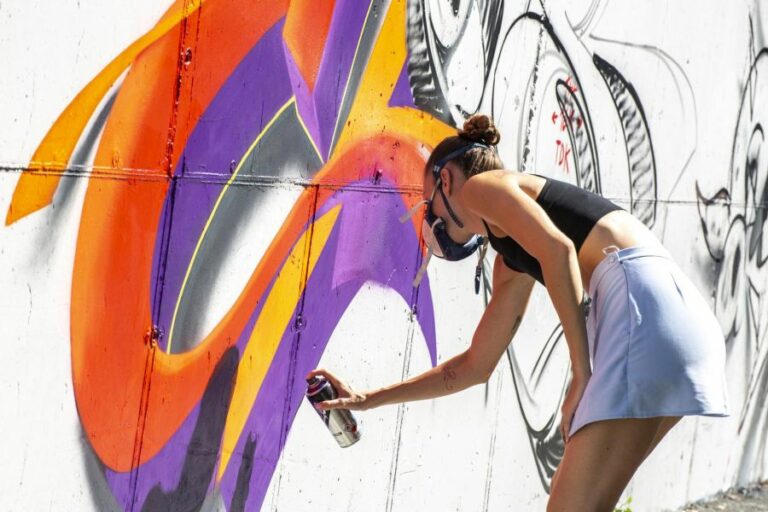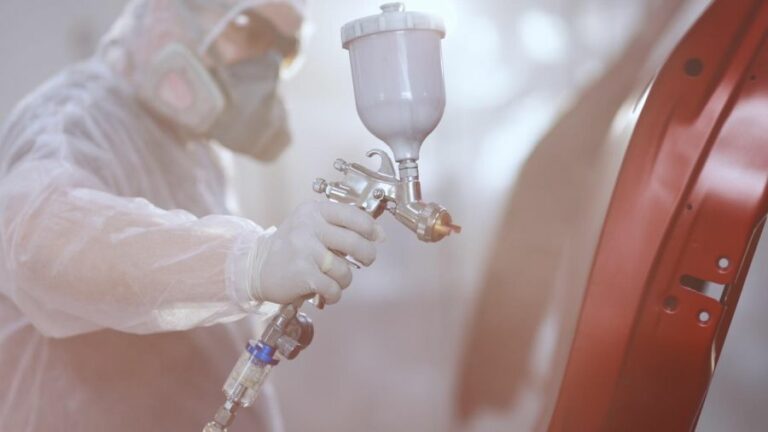Prolong Your Paint Job: DIY Spray Maintenance Guide
Are you tired of constantly touching up your paint job and want to ensure it lasts longer? Look no further! We’ve put together a comprehensive DIY Spray Maintenance Guide to help you prolong the life of your paint job, saving you time and effort in the long run. With our expert tips and tricks, you can confidently keep your paintwork looking fresh and vibrant for much longer.
Prolong your paint job:
To prolong your paint job, invest in high-quality paint and spray equipment, conduct regular inspections and cleaning of your property’s exterior, address fading and peeling promptly, perform touch-ups as needed, and store materials and equipment properly. A DIY spray maintenance routine ensures lasting visual appeal and durability.

Unlock the secret to making your paint job last longer! Our DIY Spray Maintenance Guide offers essential tips, techniques, and product recommendations to preserve and protect your project. Read on to become a master of paint maintenance and prolong the life of your handiwork.
Contents
- 1 Extend Your Paintwork: Expert DIY Spray Care Manual
- 2 Maximizing Car Spray Paint Durability: Tips & Tricks
- 3 Enhance Paint Retention with Proper Spray Application
- 4 Understanding Spray Paint Job Lifespan & Expectations
- 5 Safeguard Your Fresh Paintwork: Essential Protection Tips
Extend Your Paintwork: Expert DIY Spray Care Manual
A well-maintained paint job not only enhances the aesthetics of your home or property but also protects it against wear and tear of time and weather conditions.
Implementing a regular spray maintenance routine will prolong the life of your paint job, save you money in the long run, and keep your property looking its best.
• Choose High-Quality Paint and Equipment
To begin with, it is essential to invest in high-quality paint and spraying equipment. This initial investment will pay dividends over time by reducing the need for frequent maintenance and repainting.
High-quality paint is less prone to chipping, peeling, and fading and provides better coverage with fewer coats. Moreover, ensure that your sprayer is the correct type for your particular job and that it is well-maintained to prevent clogs and uneven application.
The EPAs guide on selecting and using paint sprayers is a valuable resource when it comes to choosing the right equipment for your project.
• Regular Inspection and Cleaning
Conducting regular inspections of your property’s paint job is a critical step in maintaining its longevity. Look for any signs of damage, such as chipping, peeling, or cracks. Addressing these issues promptly will prevent them from worsening and keep your paint job looking fresh for an extended period.
In addition to inspections, regular cleaning of your property’s exterior surfaces is crucial in maintaining a vibrant paint job. Over time, dirt, dust, mold, and mildew can accumulate on painted surfaces, dulling their appearance and potentially causing damage to the paint.
Cleaning methods can vary from simply using a soft-bristle brush and mild detergent to power washing (low-pressure) for stubborn stains or hard-to-reach areas. However, extreme care should be taken when power washing, as high pressure can cause damage to the paint.
The National Park Services guide on exterior paint maintenance offers valuable tips on cleaning and maintaining your property’s paint job.
• Address Fading and Peeling
Fading and peeling paint are common issues that can significantly impact the appearance of your property. Fading is generally caused by exposure to sunlight, whereas peeling often results from moisture or inadequate surface preparation. To address these issues, you should:
- Remove any loose paint using a scraper or wire brush, making sure not to damage the underlying surface.
- Properly clean and prime the affected areas before applying a new coat of paint. Priming is essential as it provides an ideal surface for the paint to adhere to, thereby reducing the risk of peeling.
- When dealing with moisture-related peeling, identify and address the underlying cause. This may involve sealing cracks or gaps that allow moisture to penetrate or improving the property’s ventilation to prevent the buildup of humidity.
• Touch-Up as Needed
Regular touch-ups are a quick and cost-effective way to maintain the appearance and longevity of your paint job. Invest in a touch-up paint that matches your property’s current color; remember that paint fades over time, so purchasing extra paint during your initial project is a smart move.
Be mindful to apply touch-up paint in the correct conditions (e.g., suitable temperature and humidity) and lightly sand the area before applying paint to ensure proper adhesion. Remember to always follow the paint manufacturer’s instructions for the best results.
• Proper Storage of Materials and Equipment
To prolong the lifespan of your paint and spray equipment, proper storage is essential. Store paint in a cool, dry, and well-ventilated area, away from direct sunlight, to prevent degradation.
To maintain the quality of your spray equipment, thoroughly clean it after each use, paying particular attention to removing any paint residue from the nozzle and filters. Store the equipment in a cool, dry location when not in use.
In conclusion, a regular spray maintenance routine is crucial to prolonging the life of your paint job.
Investing in high-quality materials and equipment, regularly inspecting and cleaning your property, addressing any issues promptly, and properly storing materials and equipment will ensure your paint job remains visually appealing and durable for years to come.
Maximizing Car Spray Paint Durability: Tips & Tricks
Car spray paint is an essential method used to give vehicles a new and fresh appearance or to cover any imperfections on the surface.
However, it is well known that spray paint may not always be as durable and long-lasting as desired. Proper care and maintenance can assist in prolonging the life of your car’s spray paint job.
• Choose High-Quality Paint
The first step to ensure the longevity of your car spray paint is selecting a high-quality product. Investing in premium paint will provide better durability and adhesion to the car’s surface.
Additionally, it is essential to choose a paint compatible with the existing finish on your vehicle. One reputable resource to learn about high-quality spray paints is the Automotive Refinish website from Sherwin Williams
• Prepare the Car Surface Thoroughly
Proper preparation is crucial to ensure the spray paint bonds well to the car’s surface. Make sure to clean the surface thoroughly, removing all dirt, grease, and wax. Use a wax and grease remover specifically designed for this purpose.
Moreover, you should take the time to sand any old paint or rust and prime the surface if necessary. This step will ensure better adhesion and a smoother finish for your spray painting job.
• Follow Proper Spraying Techniques
Once the surface is prepared, it’s essential to follow proper spraying techniques for a long-lasting paint job. These include:
- Shake the spray can well before using it
- Maintain a consistent distance between the can and the surface, usually about 8 to 12 inches
- Apply thin, even coats, allowing each layer to dry before applying the next
- Move your hand in a steady, sweeping motion to avoid drips and runs
- Use a back-and-forth motion, overlapping each stroke by about 50%
- Spray the edges and other hard-to-reach areas first.
These techniques will help you achieve a consistent and smooth paint finish, which will ultimately contribute to its durability.
• Apply a Clear Coat for Added Protection
Applying a clear coat over the spray paint will not only give your car a glossy finish but also provide an extra layer of protection.
Clear coats offer added resistance to UV rays, scratches, and chemicals, ensuring your car’s spray paint lasts longer. Make sure to follow the manufacturer’s recommendations and apply it similarly to the paint, in thin and even coats.
• Allow Adequate Drying Time
Allowing sufficient drying time is crucial for the longevity of your car’s spray paint job. Follow the instructions provided by the paint manufacturer, ensuring each coat dries thoroughly before applying the next one.
Additionally, it is recommended to wait a few days after the final coat before using the vehicle or exposing it to the elements. This precaution allows the paint to cure properly, ensuring it adheres well and offers greater durability.
• Regular Maintenance and Care
Taking care of the car’s finish after the paint job is essential to prolong its lifespan. Here are some maintenance tips to ensure your car’s spray paint stays in top condition:
- Wash your car regularly, using a gentle car shampoo and a soft sponge or mitt.
- Dry the car using a microfiber towel to avoid scratching the paint.
- Apply a high-quality wax or sealant to protect the paint from UV rays, debris, and contaminants. Make sure to follow the manufacturer’s recommendations for application and re-application.
- Avoid parking your car under direct sunlight for long periods, as UV rays can cause the paint to fade and deteriorate.
Following these steps will ensure that your car’s spray paint looks great and lasts longer, making the investment in both time and materials well worth it.
Enhance Paint Retention with Proper Spray Application
• What is Protective Coating?
A protective coating is a layer of transparent material applied over the paint to increase its durability and longevity. Not only does it add an extra layer of protection against various external factors, such as weather, but it also gives a professional finish to the paint job.
There are two main types of protective coatings: clear coats and sealants. Clear coats are transparent layers of paint typically made from urethane, whereas sealants are non-paint products, usually made from synthetic polymers. Both types of coatings protect the paint from UV rays, oxidation, and dirt.
• Why is a Protective Coating Essential?
Applying a protective coating over paint has numerous benefits which result from its ability to shield the paint from various external factors. Some of the advantages include:
– Resistance to UV Rays
Exposure to sunlight can cause the paint to fade and lose its original color. Protective coatings have UV inhibitors that protect the paint from the harmful effects of UV rays, maintaining the paint’s vibrancy.
– Resistance to Chemicals and Stains
Certain chemicals, bird droppings, and acid rain can eat away at the paint’s surface if left untreated. The protective coating acts as a barrier, preventing these contaminants from reacting with the paint.
– Ease of Cleaning
A protective coating makes it easier to clean the paint’s surface without damage. As it repels water and dirt, the cleaning process is more efficient.
– Protection from Scratches
The coating provides a hard barrier that prevents minor scratches and abrasions, helping to maintain the paint’s finish.
• Choosing the Right Protective Coating
There are multiple types of protective coatings available in the market, each with its distinct advantages. Some popular options are:
– Varnish
Varnish is a traditional choice for wood surfaces, as it enhances the wood grain while protecting the paint from moisture and UV rays. It is available in different sheens and can be used on both indoor and outdoor projects. However, varnish dries slowly and can become brittle over time.
– Polyurethane
Polyurethane is a versatile coating that can be used on wood, metal, and plastic surfaces. It offers excellent protection against water, chemicals, and UV rays.
It is available in various finishes, including matte, satin, semi-gloss, and high gloss. However, it may be susceptible to yellowing over time, especially when exposed to sunlight.
– Epoxy Resin
Epoxy resin is a high-performance protective coating that offers superior protection against water, chemicals, UV rays, and abrasions. It’s perfect for surfaces that require heavy-duty protection, such as garage floors or industrial equipment.
It dries to a hard, smooth, and glossy finish. However, the application process can be challenging, requiring proper mixing and a short timeframe for application.
– Acrylic Sealant
Acrylic sealants are water-based protective coatings that form a flexible, breathable film over the paint. They are easy to apply, dry quickly, and can be removed if necessary. They are ideal for surfaces prone to movement or expansion, such as wooden deck furniture or outdoor play equipment.
• Tips for Applying a Protective Coating
- Ensure the paint is fully cured: Before applying the protective coating, allow the paint to dry and cure completely. This may take anywhere from 24 hours to several weeks, depending on the type of paint and environmental conditions.
- Clean the surface thoroughly: Use a soft brush or cloth to remove any dirt or debris from the paint’s surface. Follow up with a microfiber cloth to remove any lint or dust.
- Choose the right applicator: Use a high-quality brush, roller, or sprayer specifically designed for the type of protective coating you’re using.
- Apply thin, even coats: Apply multiple thin coats of protective coating, allowing each coat to dry as per the manufacturer’s instructions. This helps to ensure proper coverage and an even finish.
- Cure and polish: Once the final coat has dried, follow the manufacturer’s instructions for curing and polishing the surface if needed.
• In Conclusion
Applying a protective coating over paint is essential for ensuring its longevity and maintaining its appearance. Selecting the right type of coating for your project depends on factors such as the surface material, environmental conditions, and desired finish.
By properly preparing the surface and following the manufacturer’s instructions, you can achieve a professional, long-lasting paint job.
Product | Type | Usage |
|---|---|---|
Clear Coat Spray | Sealant | Apply onto dry paint to create a protective layer and enhance durability |
Fixative Spray | Adhesive | Spray onto chalk, pastel, or charcoal artwork to prevent smudging |
Varnish | Sealant | Apply to acrylic or oil paintings to protect from dust, moisture, and UV rays |
Polycrylic Protective Finish | Sealant | Apply to water-based paints to create a protective, clear finish |
Understanding Spray Paint Job Lifespan & Expectations
A spray can paint job can be an economical and practical solution for refreshing the look of various objects or surfaces. However, the question often arises about the durability of such a paint job.
– Factors Affecting the Longevity of a Spray Can Paint Job
There are several factors that can affect the lifespan of a spray can paint job, including the type of paint, surface preparation, application technique, and post-application care.
Type of Paint
The quality and type of spray paint will have a significant impact on the durability of the finished product. Higher-quality paint generally lasts longer and is more resistant to fading, peeling, and chipping due to a stronger bond with the surface.
Acrylic enamel and automotive-grade paint are examples of durable and long-lasting spray paint variants. Opting for quality spray paint can extend the life of your paint job by years.
Surface Preparation
Adequate surface preparation is vital in ensuring a successful and lasting spray-can paint job. The surface should be clean, dry, and free from debris or dust.
Any existing or loose paint should be removed, and the surface needs to be sanded down and primed before applying the spray paint. Properly preparing the surface allows the paint to adhere better and, thus, last longer.
Application Technique
The method with which you apply the spray paint can significantly impact the final result. For example, holding the can too close or too far from the surface, applying too much or too little pressure, or applying an uneven coating can lead to a shorter lifespan for your paint job.
Applying multiple thin and even coats, allowing ample drying time between coats, and finishing with a clearcoat will help prolong the lifespan of your paint job.
Post-Application Care
Proper maintenance of the painted surface is crucial for maintaining its appearance and prolonging the life of the paint job.
For example, if you have spray-painted a vehicle or outdoor furniture, washing and waxing regularly can help protect the paint from the elements (The United States Environmental Protection Agency).
– Increasing the Lifespan of a Spray Can Paint Job
Now that we have discussed the factors affecting the longevity of a spray can paint job, let’s look at some recommendations from personal experience that can help increase its lifespan:
I recommend opting for high-quality spray paint
Investing in a reputable, high-quality spray paint brand will yield a longer-lasting and more durable paint job.
I recommend proper surface preparation
Ensure your surface is free from dust, debris, and grease by cleaning and drying it thoroughly. Sand away any existing paint and use a quality primer for better paint adhesion.
I recommend practicing proper application techniques
Hold the spray can 8-12 inches away from the surface, apply even and consistent pressure, and apply multiple thin coats. Remember to allow sufficient drying time between coats and finish the job with a clear coat.
I recommend taking care of your painted surface
Regular cleaning and maintenance, such as washing and waxing of outdoor surfaces, can help protect the paint from the elements and prolong its lifespan.
– So, How Long Does a Spray Can Paint Job Last?
The longevity of a spray can paint job varies depending on the factors discussed above. However, with proper preparation, application, and care, you can expect a durable paint job to last anywhere between 3 to 10 years. Of course, this is a rough estimate, and individual results may vary.
In conclusion, a successful and long-lasting spray can paint job requires attention to detail and consideration of the factors affecting its lifespan.
By investing in high-quality paint, preparing the surface adequately, applying the paint correctly, and practicing regular maintenance, you can maximize the life of your spray can paint job.
| How long does a spray can paint job last? | ||
|---|---|---|
| Factors | Expected Lifespan | Notes |
| Proper preparation and primer application | 2-3 years | Use the right primer, sand the surface, and clean properly for the best result. |
| Quality of spray paint | 1-5 years | High-quality paints are more durable and last longer. |
| Maintenance and care | 3-5 years or longer | Regularly clean and wax the painted surface, and store in a covered space for a longer lifespan. |
| Weather & environmental factors | 1-3 years | Extreme temperature fluctuations and UV rays can reduce the lifespan of a spray can paint job. |
Safeguard Your Fresh Paintwork: Essential Protection Tips
A freshly painted car can elevate the appearance and value of the vehicle, but it is essential to maintain the look and longevity of the paint job.
• Choose Quality Materials
The first step in protecting your new paint job starts with selecting top-quality materials. Choosing high-quality automotive paint and a clear coat ensures long-lasting and vibrant color.
Additionally, investing in premium primers, sealers, and additives provides a solid foundation for the paint job and enhances its durability.
• Properly Cure Paint
After painting your car, it is crucial to allow the paint to cure properly. Curing is a chemical process in which the paint hardens to achieve maximum durability and gloss. It usually takes about 30 to 90 days, depending on the paint type and environmental conditions.
During this period, avoid washing the car, applying wax, or exposing it to extreme temperatures, as doing so may hinder the curing process and compromise the paint job.
• Wash with Care
Regular washing is essential to maintain the new paint job and remove dirt, dust, and contaminants that can dull the finish. However, it is vital to follow proper washing techniques to prevent scratches and swirling on the surface.
- Use the two-bucket method: Fill one bucket with clean water and another with soapy water. This technique helps ensure that you rinse your washing mitt in the clean water bucket and avoid introducing dirt back onto the paint with the soapy water bucket.
- Use a high-quality car wash soap: Avoid using household detergents, as they are harsh on the paint surface and can strip away the protective clear coat. Instead, opt for a pH-neutral car wash soap specifically formulated for automotive paint.
- Use microfiber washing mitts: Microfiber materials are gentle on the paint surface and reduce the risk of scratches and swirl marks.
- Wash from top to bottom: Start washing your car from the top and work your way down to prevent spreading dirt onto the cleaner parts of the vehicle.
- Dry the car appropriately: Use a clean and soft microfiber towel or a waffle-weave drying towel to gently pat the car dry rather than rubbing it. This technique reduces the chances of causing any scratches on the paint surface.
• Apply Paint Protection
To shield the new paint job from exposure to natural elements, consider applying a paint protection film (PPF) or ceramic coating. Both options provide a defense barrier to safeguard the paint from UV rays, dust, rain, and scratching.
- Paint Protection Film (PPF): PPF is a transparent and durable film applied to the car’s surface, offering a physical barrier against stone chips, scratches, and other types of paint damage. The high-quality films available today are self-healing, UV-resistant, and come with extended warranties.
- Ceramic coating: This is a liquid polymer that bonds to the car’s paint surface, creating a semi-permanent, hydrophobic, and protective outer layer. The ceramic coating enhances the paint’s gloss, protects against UV damage, and makes the car easier to clean.
• Avoid prolonged sun exposure
Excessive sun exposure can lead to fading and deterioration of the paint job. When possible, park your vehicle under a shaded area, in a garage, or use a car cover to protect it from harmful UV rays.
• Maintain Regularly
Just like any other aspect of car maintenance, it is essential to keep a routine schedule to ensure your paint stays in optimal condition. This includes regular washing, occasional waxing or application of paint sealants, and periodic inspections for damages or contaminant buildup.
In conclusion, protecting your new paint job is an essential aspect of vehicle care. It not only helps to maintain the car’s appearance but also contributes to the overall value and longevity of the vehicle.
To learn more about car paint maintenance, visit this educational resource provided by an organization specializing in automotive paint and related products.

